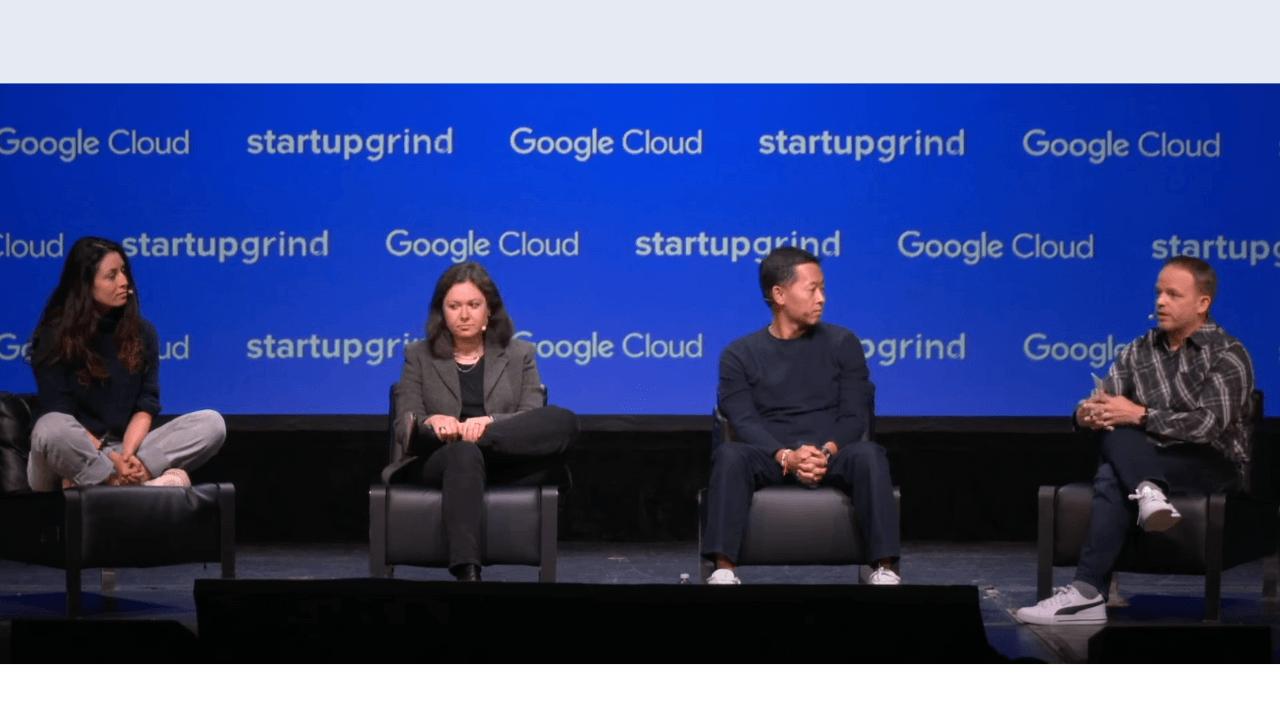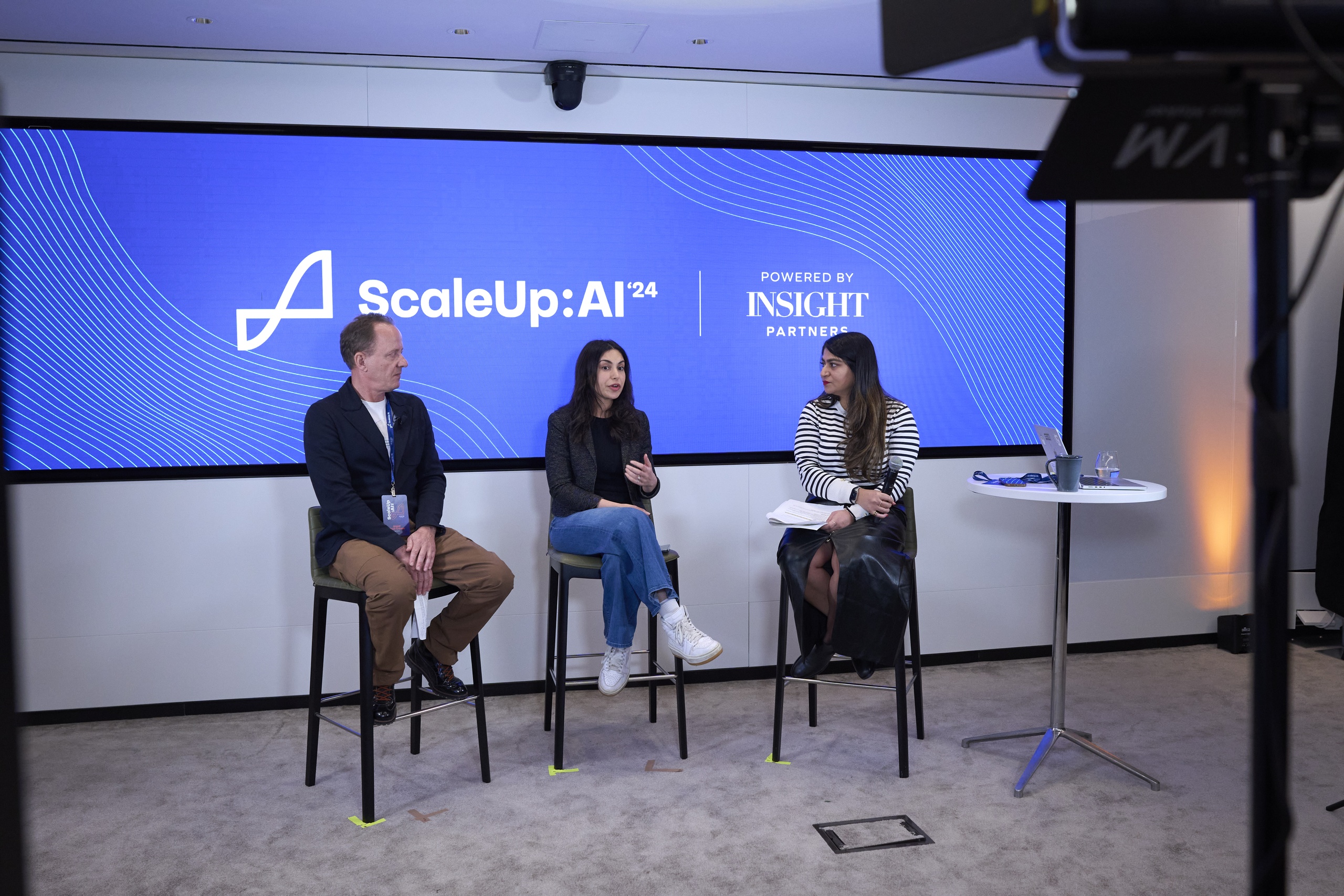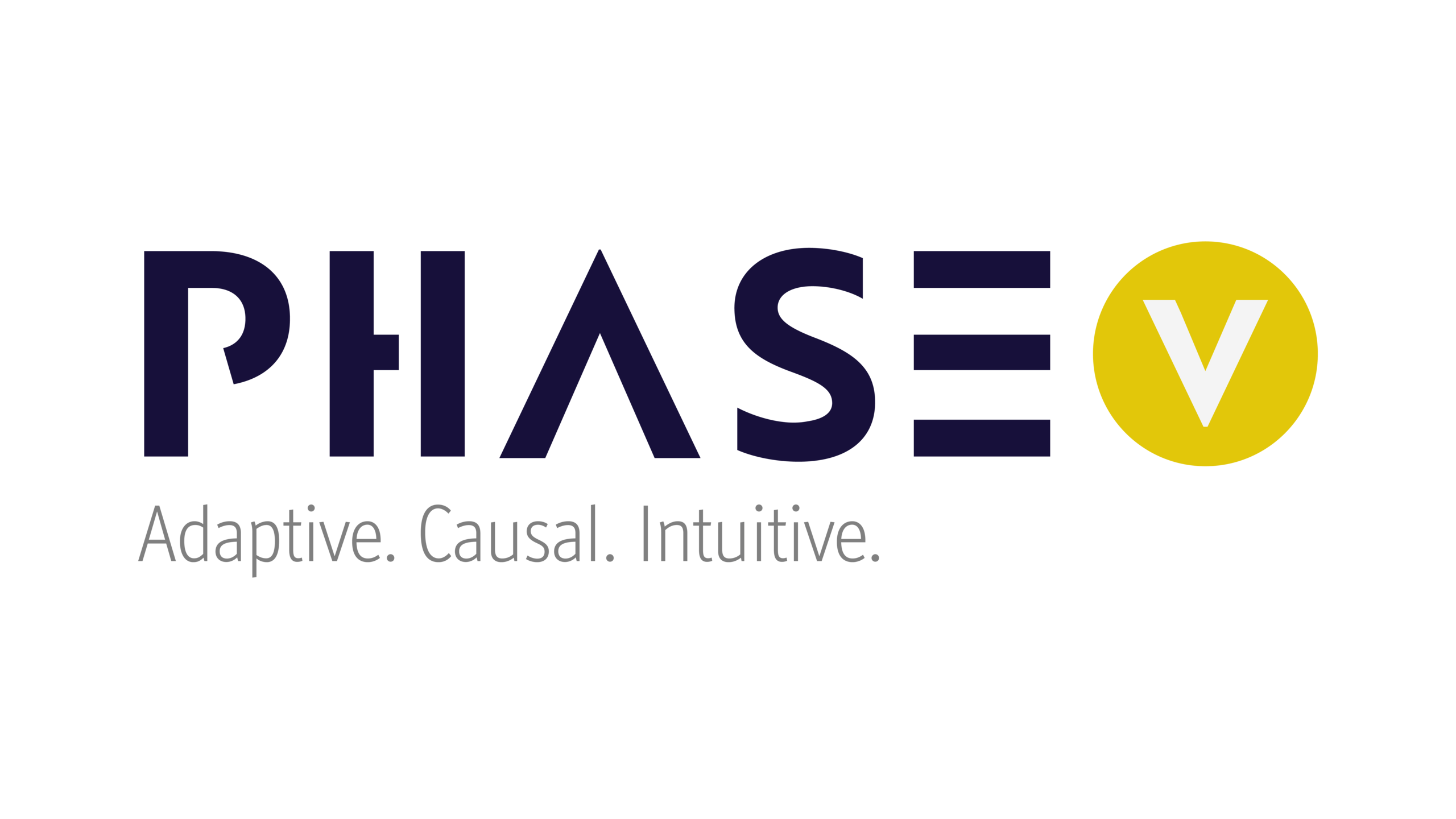Actionable approaches for GTM teams to drive generative AI impact

ChatGPT is the fastest-growing consumer application in history, reaching 100+ million users within two months of launch. With such broad usage, more and more customers and employees who have experimented with generative AI are starting to expect the same sophistication from the companies they do business with.
Businesses are answering the call, but some people perceive they may not be moving fast enough. Though a survey from Writer highlighted that 59% of businesses have purchased or will purchase at least one generative AI tool this year, we see a general trend of sales and marketing teams needing to accelerate the pace of both generative AI use in go-to-market execution and integration into their products.
Generative AI use cases for sales and marketing
The rise of generative AI tools has opened a world of possibilities for sales and marketing teams. By using generative AI, companies can automate customer service, increase lead generation, and improve lead conversion. As use cases expand for generative AI, it’s important for go-to-market teams to consider generative AI applications beyond text generation.
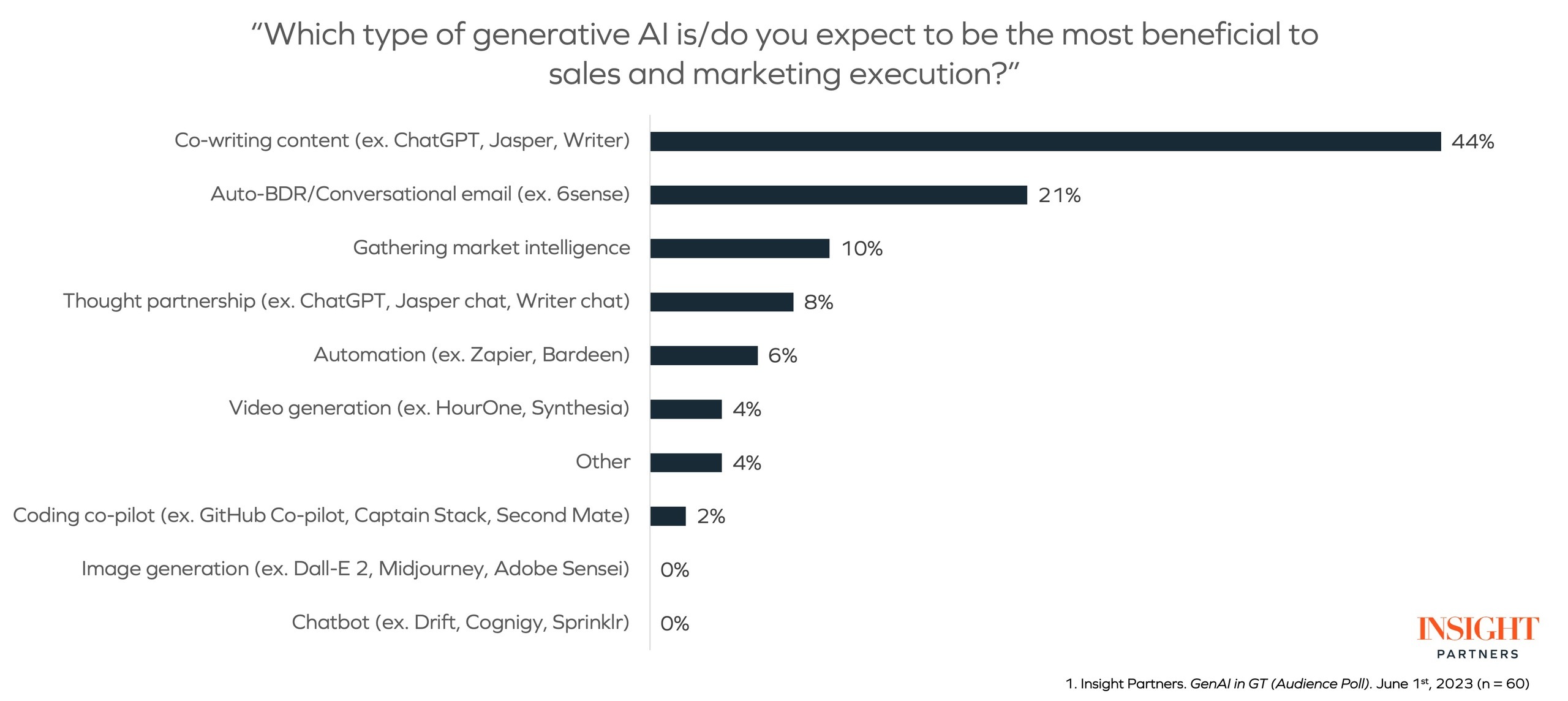
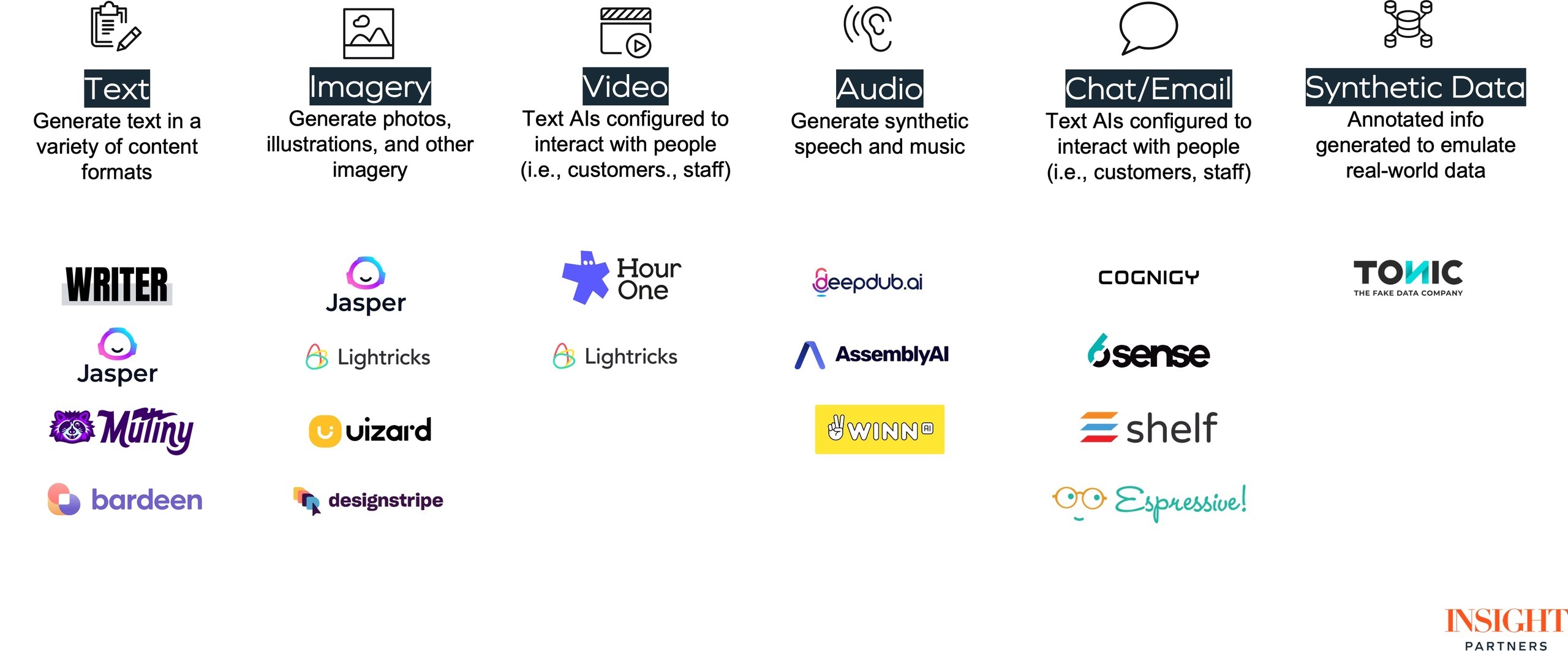
Some examples of AI companies for GTM across the Insight portfolio.
At Insight, we’ve had countless conversations with companies experimenting with and adopting generative AI. Some highlights of use cases across our portfolio include:
Keyfactor used generative AI to add metadata to blogs following a replatform.
When Jamie Walker, EVP of Marketing at Keyfactor, and her team went through a brand refresh and replatformed their website, their 100 blogs lost all associated metadata. Instead of spending days or even weeks repopulating blog metadata, her performance marketer used ChatGPT to extract the relevant metadata from the blogs. The bot completed the task in just a few hours, producing metadata that was more robust and complete than it was before the replatforming.
SPARETECH uses generative video for SDR outreach.
Benjamin Sommer, head of sales at SPARETECH noted that their home market of Germany values face-to-face communication. So SDRs record a single video that introduces their solution, then generate hundreds of other videos that are customized with the prospect’s name and organization using SendPotion. This approach saves SDRs massive amounts of time and increases their ability to touch more accounts with a message that stands out.
Snappt future proofs its generative AI content writing.
Sean X Cummings, CMO of Snappt, employs a variety of generative AI tools to streamline the organization. For internal meetings, he uses Tactiq to transcribe the conversation and make to-do lists. For their site redesign, Sean and his team used Jasper’s chrome extension to rewrite copy directly on the page. His content marketing team runs Jasper’s outputs through ZeroGPT. Like a plagiarism detector, the tool identifies which parts of text are AI-generated. Cummings said Google isn’t deprioritizing AI generated content yet, but they’re trying to futureproof themselves if they do.
Generative AI’s lack of integration into workflows remains a problem
GTM teams are most challenged by lack of integration between generative AI and common tools. This forces users to switch tools constantly.
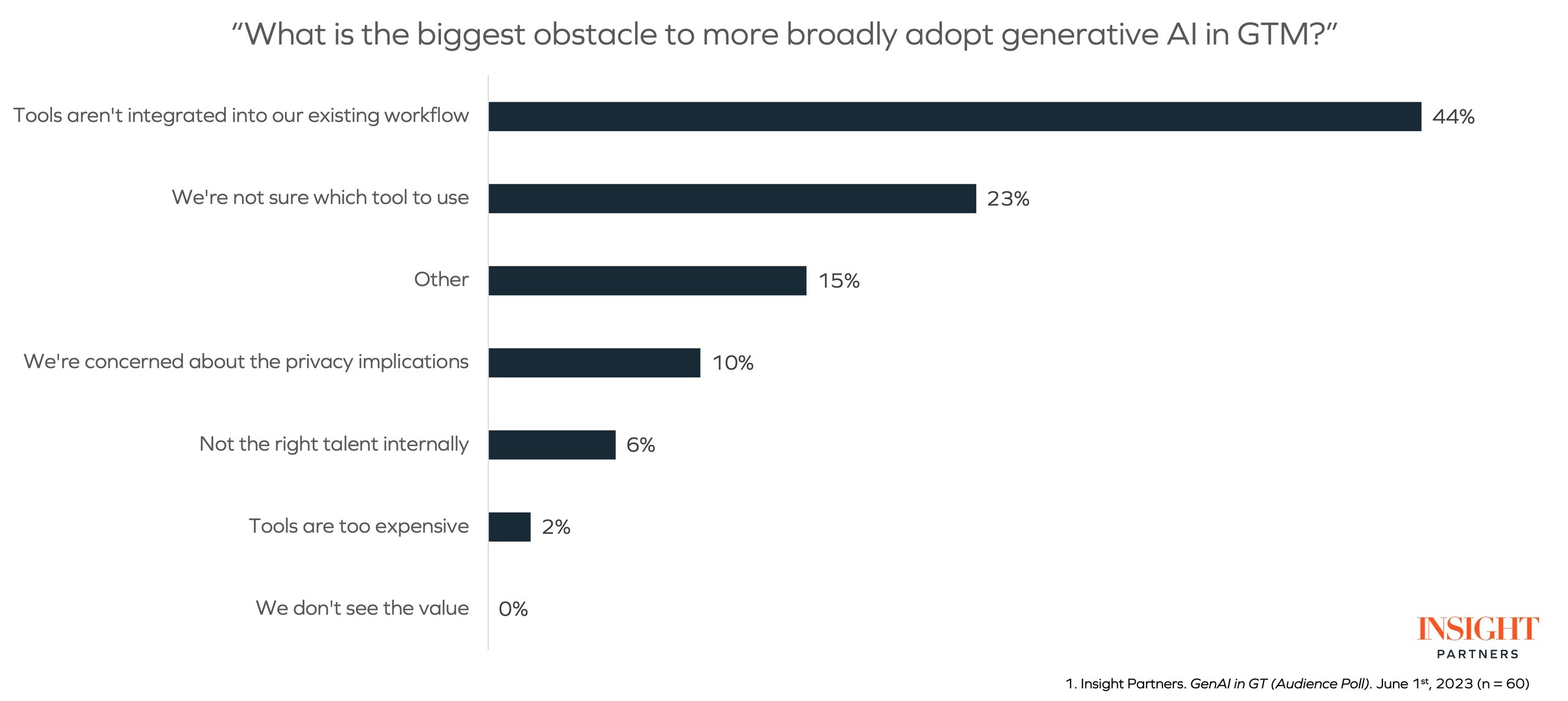
For generative AI to become more useful, teams must plan how the tools will fit into their existing stack and have a plan for managing change.
Embrace generative AI maturity to remain competitive
The value of generative AI is clear. In our survey of GTM leaders, 87% anticipated that generative AI would increase efficiency in their organizations by at least 16%. As generative AI and its use cases evolve, the depth and breadth with which you can engage prospects and customers increase exponentially. This pushes your competitive edge further and further out. Simply using generative AI is not always enough to remain competitive though; you may also need to create a programmatic flywheel to scale your use of generative AI, which involves custom models that continuously learn and improve.
Simply using generative AI is not always enough to remain competitive though; you may also need to create a programmatic flywheel to scale your use of generative AI, which involves custom models that continuously learn and improve.
Many companies are early in their generative AI journey and can benefit from thinking about two facets of integrating generative AI into their businesses: product strategy and scaling.
Product strategy is how organizations are actively embedding generative AI into their products with the goal of increasing differentiation and driving revenue. Scaling is how organizations are using generative AI in their go-to-market execution. Sales, marketing, and customer success teams will generally want to focus on strategically adopting generative AI to become more efficient and effective, while product and engineering teams will generally want to build generative AI capabilities into their products to enable their customers in the same way. The graphic below shows which facets are important at each stage of a company’s journey to incorporate generative AI into their business.
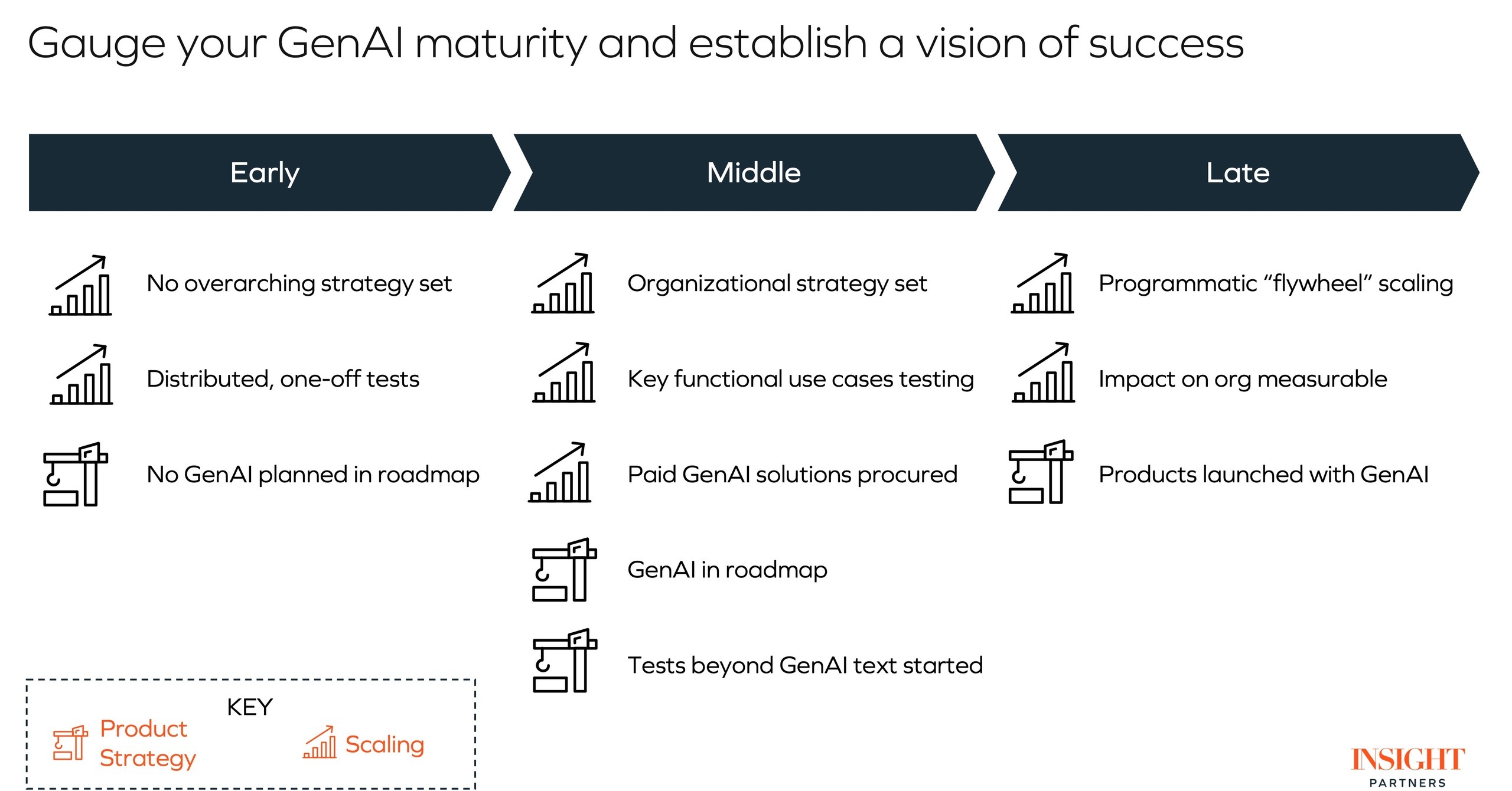
Generative AI has the potential to significantly reduce the amount of time professionals spend on mundane tasks, freeing them up to focus on more creative and value-added projects. But adopting new tools requires that businesses carefully implement the technology and integrate it into existing workflows and processes. Only then will companies be able to unlock the real benefits of the technology.
Insight Partners portfolio companies have exclusive access to tools, tips, approaches, and advice through our GO Platform.
Disclosure: 6sense, Bardeen, Cognigy, Deepdub.ai, Designstripe, Espressive, HourOne, Jasper, Keyfactor, Lightricks, Mutiny, Shelf, Snappt, SPARETECH, Tonic, Uizard, Winn.ai, and Writer are Insight portfolio companies.

